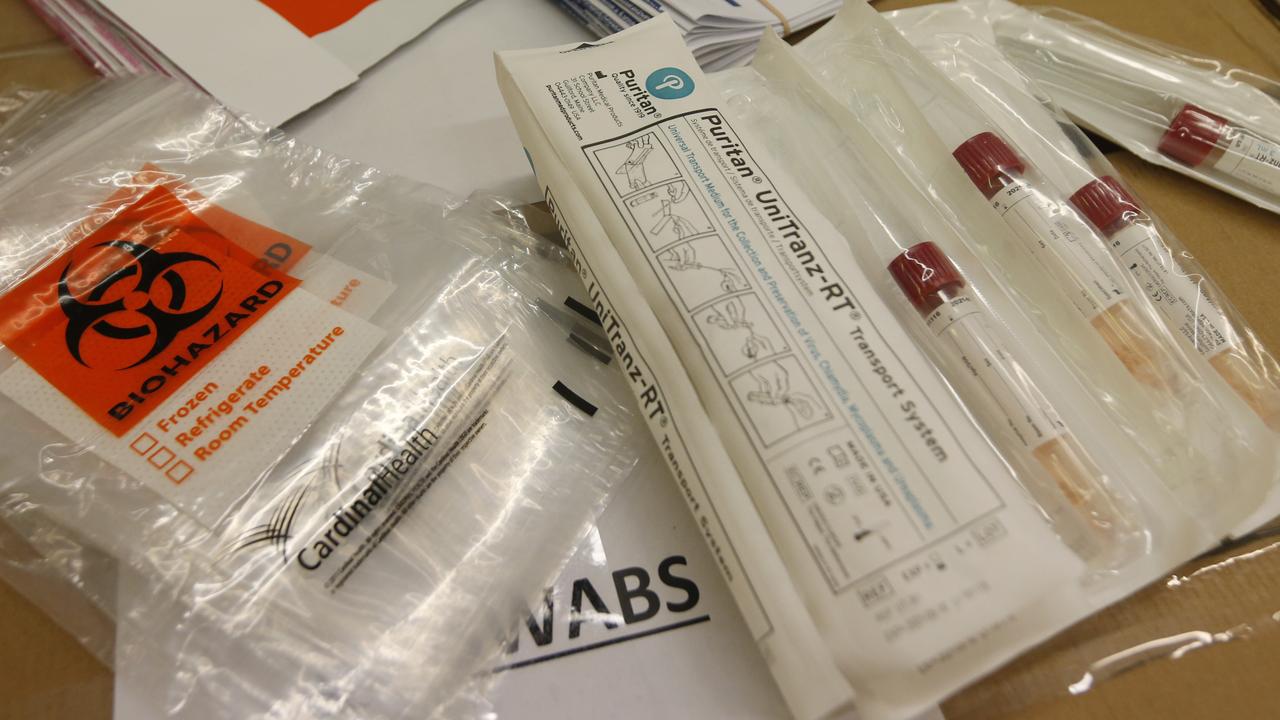Coronavirus: How the virus finger prick test works
Health Minister Greg Hunt on Tuesday announced new finger-prick virus tests will soon be rolled out in GP clinics around Australia. Here’s how they work.

Around 1.5 million COVID-19 finger-prick tests will be arriving in Australia in the next few days and rolled out in GP clinics around the nation.
National Health Minister Greg Hunt announced on Tuesday the “point-of-care” tests were approved over the weekend, and will “allow for greater testing of patients within the general practice setting”.
The rapid tests – which take a little as 15 minutes to conduct – will be carried out by doctors and nurses, Professor Michael Kidd, an adviser on Chief Medical Officer Brendan Murphy’s team, told ABC News this morning.
“We will get a result back very quickly, while you’re there with your doctor or with your nurse, and then be able to provide you with advice,” Prof Kidd said.
RELATED: Follow the latest coronavirus updates

While Australian laws prevent self-test kits of serious infectious diseases being sold to the public, the UK are just “days” away from releasing 3.5 million of the tests for self-administration. Brits will be able to purchase the kits, which look like pregnancy tests, in retailers like major pharmacy chain Boots or online via Amazon.
The test involves pricking your finger “like a diabetic would”, director of Public Health England’s National Infection Service Professor Sharon Peacock said.
“(You) get a drop of blood and put it on a filter paper and then run some liquid to make that blood run into the test zone. Then you will read it to see whether you have two types of antibodies: one is IGM, which arises very early in an infection, and the other is IGG, which is the body reacting to the virus.”
The tests detect antibodies that our immune systems naturally make to fight SARS-CoV-2 – the virus that causes COVID-19 – but may not work for people who are currently not showing symptoms.
The point-of-care tests are only able to pick up antibodies five to seven days after the person becomes infected, and may also be prone to false positives if a person has previously been infected by one of several coronaviruses humans are prone to.
RELATED: Blood types more at risk of infection
“You have to be infected for a number of days before the test shows you are positive or negative for COVID-19,” Prof Kidd said this morning.
“So this means that it will probably be a test which will mainly be used for people who already have symptoms of fever or respiratory symptoms. It won’t really help us in people who have been in contact but are currently asymptomatic or if the contact has been very recent.”
The Australian Government has consistently said that its testing rate – which is growing rapidly by the day – is among the highest in the world. Over 178,000 tests have been carried out around the nation, as the number of confirmed cases of the virus surged past 3000 overnight.
“Along with Korea and Singapore, we are at the global forefront in terms of the breadth and width of our testing,” Mr Hunt said on Tuesday.
Standard COVID-19 testing currently involves taking throat and nasal swab, known as polymerase chain reaction (PCR) tests, and Mr Hunt said these will remain a “critical component” in Australia’s testing toolkit going forward.
RELATED: Do I have a cold, flu or coronavirus?
The announcement of the new test rollout comes after the Government announced it will expand its COVID-19 testing criteria.
In a statement following another meeting of national leaders on Wednesday night, the National Cabinet said healthcare workers, aged care workers and people in geographically localised areas and “high risk” settings will now be tested for the potentially deadly disease.
As well as health and aged care workers, the statement said testing will “be expanded to include hospitalised patients with fever and acute respiratory symptoms of unknown cause, at the discretion of the treating clinician”.
It specified “high risk” settings as aged and residential care, rural and remote Aboriginal and Torres Strait Islander communities, detention centres/correctional facilities, boarding schools and military bases with live-in accommodation.
The previous testing criteria had only extended to people who had returned from overseas travel and were displaying symptoms of COVID-19, or anyone who had been in direct contact with a confirmed virus case.




